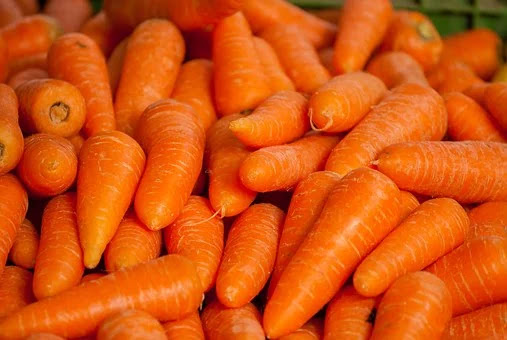25 interesting facts about salad
From where it comes from:
1. Salad comes from the Latin word “herba salta” or “salted herbs,” because greens were usually seasoned with dressings containing lots of salt.
In French salad is called as 'salade'.
Da Vinci fact:
2. Leonardo da Vinci was the first artist to depict salad in his paintings. In the Leda, 1504, a child, standing next to the goddess of fertility, poses with a bouquet of lambs lettuce.
Key ingredients:
Lettuce:
3. Lettuce one of the ingredients of salad is a member of the sunflower family.
4. Christopher Columbus first introduced lettuce to America.
5. The lettuce we see today actually started out as a weed around the Mediterranean basin.
6. Significant levels of folate that is present in lettuce have been shown to assist in the prevention of stroke and cardiovascular disease. Thus it also helps to protect heart muscles.
Cucumber:
7. Cucumbers another ingredient of salad contain Vitamin B1, B2, B3, B5 and B6, Folic Acid, Vitamin C, Iron, Calcium, Zinc, Magnesium, Phosphorus and Potassium, whilst also being around 95% water.
8. Cucumbers also contain the lignans; lariciresinol, pinoresinol, and secoisolariciresinol which has a link with reducing the risk of developing cancers.
Tomato:
9. Tomato which is also a popular ingredient of salad is composed of 95% water, 4% carbohydrates and less than 1% of both fat and protein.
10. A tomato is a fruit (botanically) because they contain the seeds inside of them, but commonly considered a culinary vegetable due to its low sugar content.
Broccoli:
11. Broccoli a component of salad is a rich source of vitamin K, vitamin C, chromium and folate. It is also an excellent source of dietary fiber, pantothenic acid, vitamin B6, vitamin E, manganese, phosphorus, choline, vitamin B1, vitamin A (in the form of carotenoids), potassium and copper. It also contains vitamin B1, magnesium, omega-3 fatty acids, protein, zinc, calcium, iron, niacin and selenium.
12. Broccoli has an ability to prevent cancer, improve digestion, lower cholesterol levels, detoxify the body, and maximize vitamin and mineral uptake. It also prevents allergic reactions, boosts the immune system, protects the skin, prevents birth defects, lowers blood pressure, eliminates inflammation, and improves vision and ocular health.
Onion:
13. Onion also also a content of salad is bulb-shaped vegetables that grow underground.
14. Due to their high content of antioxidants and sulfur-containing compounds, onions have antioxidant and anti-inflammatory effects and have a link to reduce risk of cancer, lower blood sugar levels, and improve health of bone.
Carrot:
15. The carrot is a root vegetable with the most commonly eaten part being the taproot.
16.Vitamin A is important for the health of our vision (including our night vision) as well as our bones, teeth and skin. The human body turns beta-carotene into vitamin A and carrots are one of the best sources for beta-carotene.
17. Cultivated carrots are usually made up of about 88% water, 7% sugar, 1% protein, 1% fibre, 1% ash, and 0.2% fat.
Capsicum:
18. Capsicums are an excellent source of vitamin A and C (red contain more than green capsicums).
19. They are also a good source of dietary fibre, vitamin E, B6 and folate.
20. The sweetness of capsicums is due to their natural sugars (green capsicums have less sugar than red capsicums).
21. Energy – 100 g of green capsicum supplies 90 kJ (105 kJ from red capsicum).
Spinach:
22. The nutrients found in spinach not only help to build strong bones, they also help to improve the performance of the mitochondria - the power house of our cell that help to produce energy, as well as improve and power our muscles.
Presence of dietary fibre:
23. As leafy greens and raw vegetables are rich source of dietary fibre, so salad has several health advantages for its fibre content:
- Fiber helps to reduce LDL or “bad” cholesterol.
- It helps to control blood sugar.
- Adequate fiber intake helps with weight loss and healthy weight maintenance.
- It normalizes bowel movements, and aids in the prevention of bowel disease.
- Proper fiber intake has been shown to reduce the recurrence and prevention of a number of cancers.
- Consuming a fibre-rich salad helps us to control our body weight.
Presence of carotenoids:
24. The carotenoids found in the leafy greens like spinach, Romaine and Red Lettuce help the eyes to adjust from bright to dark, and to filter out high intensity light levels, protecting them from the formation of damaging free radicals.
Effects on youthful skin tone:
25. The high levels of water found in salad veggies improves hydration in our bodies, which is necessary for youthful skin tone and various basic body functions.
 Reviewed by Antara
on
August 13, 2020
Rating:
Reviewed by Antara
on
August 13, 2020
Rating:















No comments: